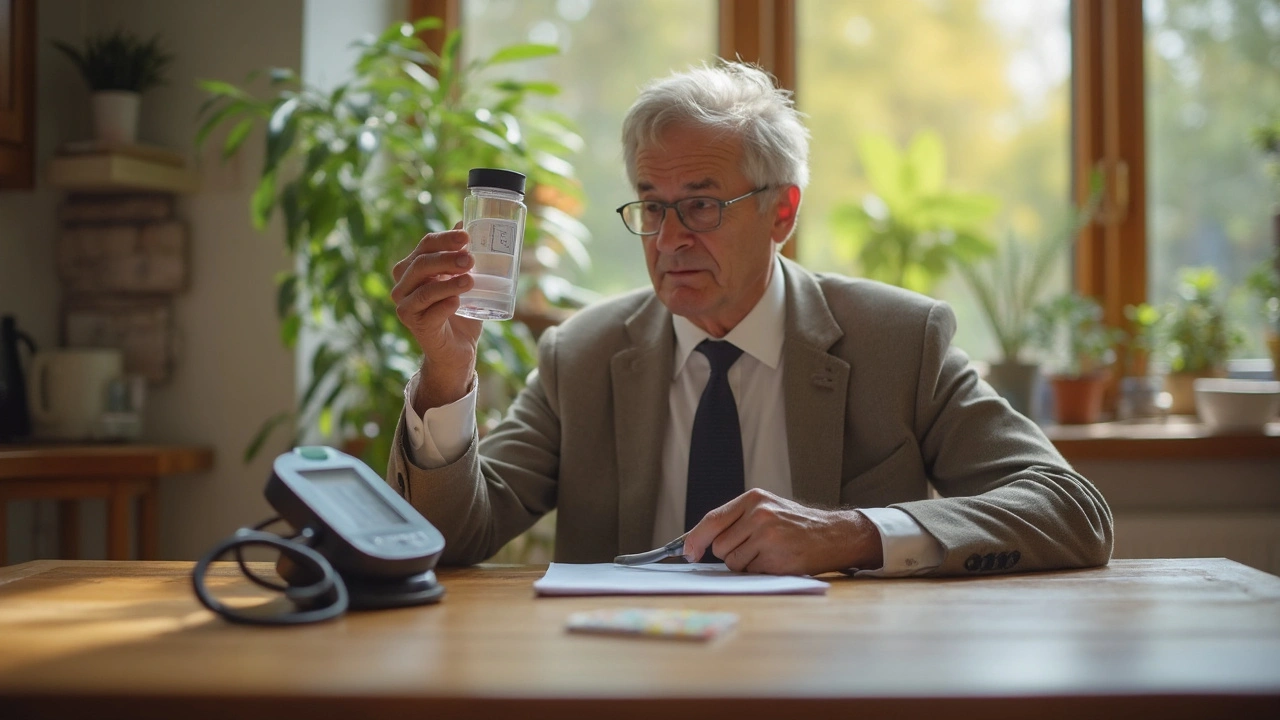High blood pressure: what to do now and next
High blood pressure (hypertension) often shows no symptoms but raises the risk of heart attack, stroke, and kidney problems. If you’ve been told your numbers are high, you don’t need to panic — you need a clear plan. Below are simple actions you can take today, what medicines commonly do, and how to get prescriptions safely if you need them.
Quick actions you can start today
Check your numbers at home with a reliable cuff. Aim to get consistent readings — write them down or use an app. If your blood pressure is repeatedly above about 130/80 mm Hg, talk to your doctor.
Cut sodium: try to keep daily salt under 2,000 mg. Small swaps matter — choose fresh over processed, rinse canned foods, and skip the salty snacks. Move more: 20–30 minutes of brisk walking most days lowers blood pressure over time. Lose even a few pounds if you’re overweight; 5–10% weight loss often helps.
Limit alcohol, stop smoking, and get regular sleep. Stress matters too — breathing exercises, short walks, or a 5-minute break can lower readings that spike from anxiety.
Common medication options & what to ask your doctor
If lifestyle changes aren’t enough, medications are very effective. Major drug classes include:
- Diuretics (water pills) — often first-line and cheap. They help your body shed extra salt and water.
- ACE inhibitors and ARBs — protect the heart and kidneys, commonly used for people with diabetes.
- Calcium channel blockers — useful if other drugs aren’t enough or cause side effects.
- Beta-blockers — great for specific heart conditions; there are newer alternatives if one causes fatigue.
Ask: What is my target blood pressure? What side effects should I watch for? Will this interact with my other meds? If one drug doesn’t suit you, there are solid alternatives — for example, articles on our site cover Spironolactone and Inderal alternatives if you want to know options and trade-offs.
Need a refill or a new prescription? Telehealth and online pharmacies can help, but use trusted services. Look for licensed providers, clear contact info, and patient-friendly policies. Our site has guides comparing discount pharmacies and telehealth tips so you can save money without risking safety.
When to contact a clinician: immediate care is needed for chest pain, severe headache, shortness of breath, sudden weakness, or very high readings (like 180/120 or above). For slow-rising or slightly elevated numbers, schedule an appointment and bring your home log.
Want practical next steps? Start with a home cuff, record a week of morning and evening readings, try the salt and activity changes, and review results with a clinician. Browse our related articles on medication choices, pharmacy safety, and telehealth to make informed decisions about treatment and where to get prescriptions safely.
